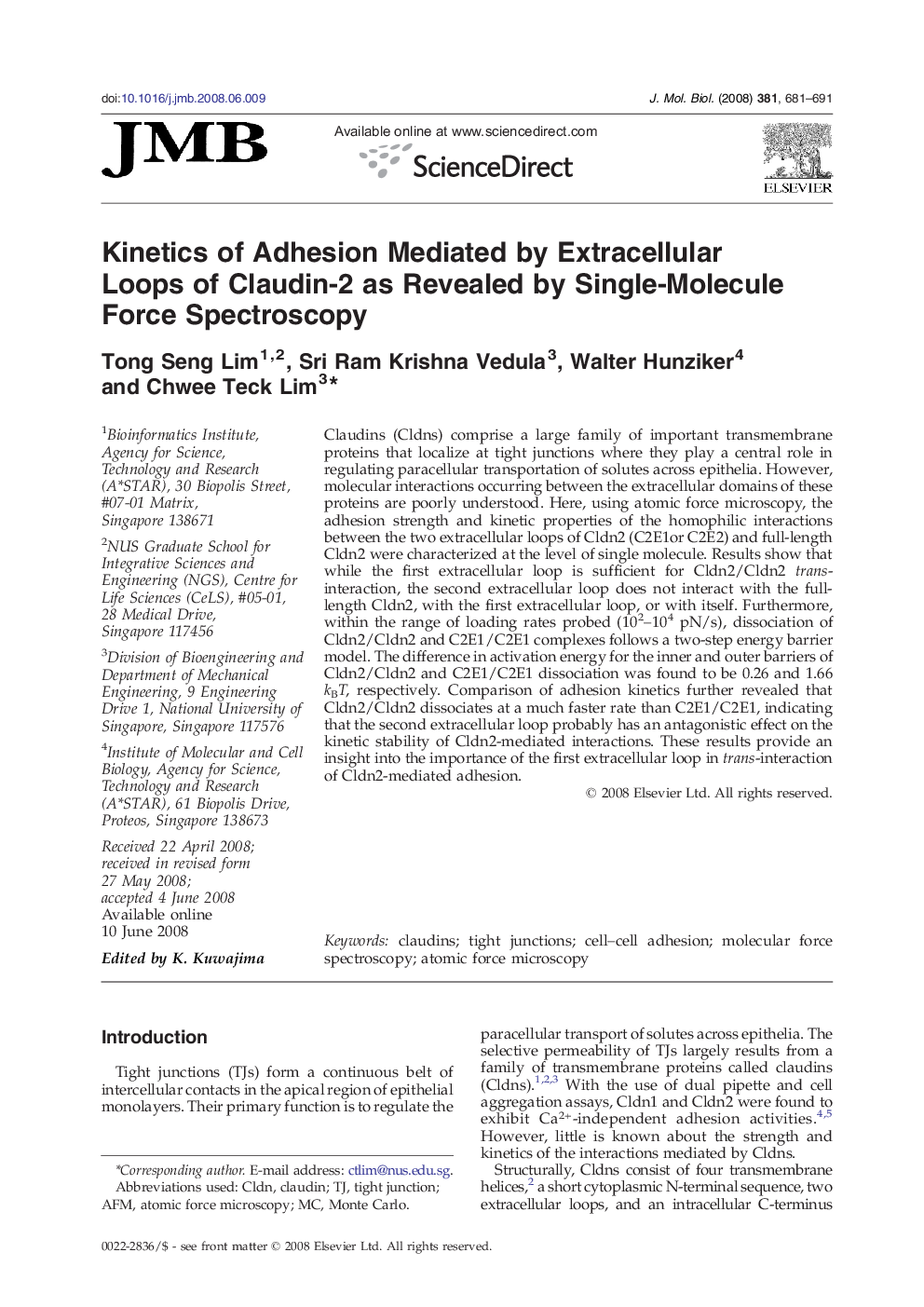| Article ID | Journal | Published Year | Pages | File Type |
|---|---|---|---|---|
| 2187327 | Journal of Molecular Biology | 2008 | 11 Pages |
Claudins (Cldns) comprise a large family of important transmembrane proteins that localize at tight junctions where they play a central role in regulating paracellular transportation of solutes across epithelia. However, molecular interactions occurring between the extracellular domains of these proteins are poorly understood. Here, using atomic force microscopy, the adhesion strength and kinetic properties of the homophilic interactions between the two extracellular loops of Cldn2 (C2E1or C2E2) and full-length Cldn2 were characterized at the level of single molecule. Results show that while the first extracellular loop is sufficient for Cldn2/Cldn2 trans-interaction, the second extracellular loop does not interact with the full-length Cldn2, with the first extracellular loop, or with itself. Furthermore, within the range of loading rates probed (102–104 pN/s), dissociation of Cldn2/Cldn2 and C2E1/C2E1 complexes follows a two-step energy barrier model. The difference in activation energy for the inner and outer barriers of Cldn2/Cldn2 and C2E1/C2E1 dissociation was found to be 0.26 and 1.66 kBT, respectively. Comparison of adhesion kinetics further revealed that Cldn2/Cldn2 dissociates at a much faster rate than C2E1/C2E1, indicating that the second extracellular loop probably has an antagonistic effect on the kinetic stability of Cldn2-mediated interactions. These results provide an insight into the importance of the first extracellular loop in trans-interaction of Cldn2-mediated adhesion.
